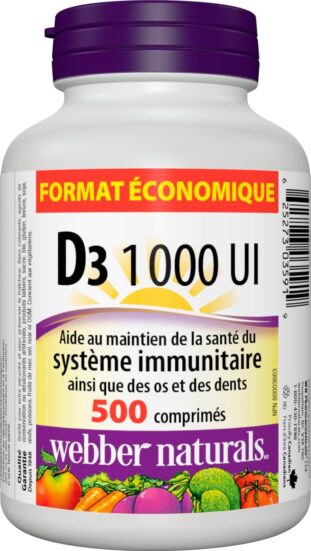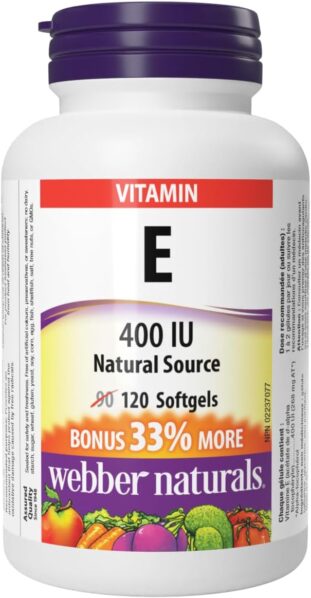Discover how vitamin deficiency and leg cramps are linked, which vitamins are key for muscle health, and practical tips to manage and prevent cramps, especially for seniors.
If you are a senior experiencing muscle cramps, especially at night, it can feel like an unwelcome guest interrupting your rest. And while leg cramps can happen to anyone, they are surprisingly common among older adults.
You might be wondering if vitamin deficiency and leg cramps are related. The short answer? Absolutely. Let’s break down how vitamins impact muscle health and what you can do to keep cramps at bay.
Vitamin Deficiency and Leg Cramps
So, why do leg cramps strike? What is the relationship between vitamin deficiency and leg cramps? More often than not, it comes down to nutritional deficiencies and pain that is caused by missing key vitamins and minerals.
As you age, your body become less efficient at absorbing nutrients. This can lead to deficiencies that sneak up and cause muscle spasms or chronic leg cramps. Understanding the root cause can make all the difference!
Deficiencies in vitamins such as D, E, and essential minerals like magnesium and potassium can lead to muscle dysfunction. Without adequate levels, muscles can’t contract properly or relax, which triggers cramping. Seniors are particularly prone due to reduced nutrient absorption and dietary changes over time.
Additionally, medications often taken by older adults can interfere with nutrient levels, exacerbating the problem. Recognizing these deficiencies and addressing them can significantly reduce cramps and improve overall muscle health.
What Are Important Vitamins for Muscle Health?
To keep your muscles strong and free from pesky cramps, certain vitamins and minerals are absolutely essential and play key roles in maintaining muscle health.
Vitamin D is a powerhouse vitamin essential for muscle function, as it helps the body absorb calcium, which is crucial for muscle contraction. A deficiency in Vitamin D can lead to muscle weakness, muscle cramps and pain, especially in seniors.
Vitamin B12 is another vital nutrient for muscle health, as it aids in red blood cell production and nerve function. Low levels of B12 can lead to fatigue and weakness, impairing muscle strength.
Vitamin E acts as an antioxidant, protecting muscle cells from oxidative stress and damage. It also supports the immune system, which is important for recovery after exercise.
Vitamin C is key for collagen production, a protein that helps maintain the integrity of muscle tissue and tendons. It also plays a role in repairing damaged muscles and reducing inflammation.
Minerals
Magnesium and Potassium, though not vitamins are equally important.
Magnesium works hand-in-hand with calcium to support muscle relaxation and prevents muscle spasm and cramping. Ensuring adequate intake of these vitamins and minerals supports overall muscle health, reduces cramps, and aids in recovery.
Potassium: Low levels of potassium are infamous for causing severe muscle cramps, especially at night.
Vitamin Deficiency and Leg Cramps – Symptoms to Note
Leg Cramps and Vitamin D Deficiency
A lack of vitamin D can show up in a variety of ways, but when it comes to your muscles, here’s what to look out for:
- Chronic muscle soreness
- Frequent leg cramps at night
- Muscle weakness and fatigue
- Painful joints and increased risk of falls
The tricky part is that vitamin D deficiency symptoms can be subtle, so it’s important to get tested if you suspect you’re low.
Vitamin B12 Deficiency
- Fatigue or weakness
- Numbness or tingling in the hands and feet
- Memory problems or difficulty concentrating
- Pale or jaundiced skin
- Shortness of breath or dizziness
- Mood changes, including depression or irritability
- Glossitis (swollen, inflamed tongue)
Vitamin E Deficiency
- Muscle weakness or coordination problems
- Vision problems, like blurred vision or retinopathy
- Numbness or tingling in the hands and feet (neuropathy)
- Weakened immune system, leading to increased infections
- Difficulty with balance or walking
- Fatigue
Vitamin C Deficiency
- Fatigue or weakness
- Swollen, bleeding gums
- Easy bruising
- Dry, flaky skin
- Joint pain or swelling
- Slow wound healing
- Anemia or iron deficiency
- Corkscrew-shaped body hair (in severe cases, a sign of scurvy)
If any of these symptoms occur, it’s important to consult a healthcare provider to check for deficiencies and get proper treatment.
Leg Cramps and Vitamin E Deficiency
You might not often hear about leg cramps and vitamin E, but it plays a vital role in muscle health. Vitamin E is known for its powerful antioxidant properties that protect muscle cells from oxidative damage, which can worsen with age.
As seniors age, their natural antioxidant defenses can weaken, leaving muscles more vulnerable to stress and cramping.
By incorporating vitamin E into your diet—whether through supplements or foods like almonds, sunflower seeds, and spinach—you can help support muscle function and reduce the frequency of cramps.
It’s essential, however, to maintain a balanced intake since excessive vitamin E can lead to unwanted side effects.
For seniors, finding the right balance can make a noticeable difference in managing chronic muscle pain and preventing nighttime leg cramps. Always consult your healthcare provider before starting any new supplement regimen.
Leg Cramps and Vitamin D Deficiency
Leg cramps and vitamin D deficiency are more common than many think. Vitamin D helps the body absorb calcium and maintain phosphorus levels, both of which are essential for proper muscle contraction and relaxation.
Without enough vitamin D, muscles can become more prone to cramping and spasms, especially at night.
Seniors often face a higher risk due to decreased natural production of vitamin D from sun exposure and dietary intake.
If you’re experiencing persistent leg cramps, boosting your vitamin D levels through supplements or sun exposure can make a noticeable difference.
Include vitamin D-rich foods like fatty fish, fortified milk, and eggs in your diet for additional support. Remember, moderation is key; too much vitamin D can lead to health complications.
Always consult with a healthcare professional to determine the right approach for your needs.
What Vitamin Deficiency Causes Leg Cramps?
It depends……
Deficiencies in vitamin D, E, and minerals like magnesium and potassium are major culprits.
Seniors and Vitamin D Deficiency
Why is vitamin D so important for seniors? As we get older, our skin’s ability to synthesize vitamin D from sunlight decreases. That’s why many older adults face vitamin D deficiency without even knowing it.
This deficiency can not only trigger leg cramps but also impact bone health and overall mobility. Adding a vitamin D supplement or spending some time in the sun can work wonders for both your muscles and mood.
Effects of Too Much Vitamin D and Vitamin E
While getting enough vitamins is essential, too much of a good thing can be harmful. Here’s what can happen with excessive doses.
Too much Vitamin D can lead to a condition called hypercalcemia, where excess calcium builds up in the blood, causing symptoms like nausea, vomiting, weakness, and kidney problems.
Long-term overuse can damage organs, particularly the kidneys, and interfere with bone health.
Excess Vitamin E, while rare, can increase the risk of bleeding by interfering with blood clotting. High doses may also cause nausea, diarrhea, and fatigue.
In extreme cases, it can weaken the immune system and increase the risk of strokes due to blood thinning.
Both vitamins are important, but moderation is key. Always consult with a healthcare provider before taking high doses of supplements to avoid these potential risks.
Best Time to Take Vitamin D and Vitamin E: Recommended Dosages for Seniors
Timing can be everything when it comes to vitamins.
Recommended dosages
The best time to take Vitamin D is with a meal containing fat, as it’s a fat-soluble vitamin, which helps improve absorption. Morning or afternoon is fine, but consistency matters.
Taking it too late in the day might interfere with sleep due to its role in regulating circadian rhythms.
For Vitamin E, it’s also best taken with food to enhance absorption. There’s no specific time, but pairing it with a meal that contains healthy fats, like avocado or nuts, is ideal.
For seniors, the recommended daily dosage of Vitamin D is typically 800–1,000 IU, but it can vary based on individual needs and sun exposure.
For Vitamin E, the recommended amount is around 15 mg (22.4 IU) per day.
Always consult a healthcare provider before starting any supplement regimen, to avoid potential interactions with medications or toxicity risks with high doses.
How Does Dehydration Affect Leg Cramps?
Dehydration can significantly increase the risk of leg cramps, especially in seniors. When the body is dehydrated, it lacks sufficient fluids and electrolytes, such as potassium, calcium, and magnesium, which are essential for proper muscle function.
These imbalances can cause muscles to contract uncontrollably, leading to painful cramps.
For seniors, the risk is higher due to decreased kidney function, a natural decline in thirst perception, and often taking medications that can cause dehydration.
Conditions like diabetes or heart disease can also contribute to dehydration, making it harder for the body to regulate fluid levels.
Leg cramps often occur at night (nocturnal leg cramps), and dehydration can worsen this. Inadequate fluid intake also reduces blood circulation, making muscles more prone to cramping.
As you grow older the sensation of thirst diminishes. It is therefore more important that you pay attention to your hydration
To prevent cramps, drink plenty of water throughout the day, maintain balanced electrolyte levels, and stretch regularly. If cramps persist, it’s important to consult a healthcare provider, as they could be a sign of an underlying issue.
Practical Tips for Managing Leg Cramps
- Stay Hydrated: Dehydration can worsen leg cramps, so drink water throughout the day.
- Stretch Regularly: Gentle stretching before bed can help prevent nighttime leg cramps.
- Eat a Balanced Diet: Include foods high in magnesium, potassium, and calcium, such as leafy greens, bananas, and dairy.
- Get Sunlight: A few minutes in the sun can go a long way for boosting your vitamin D levels .
Conclusion – Vitamin Deficiency and Leg Cramps
If you are dealing with leg cramps and suspect a vitamin deficiency, you are not alone. By incorporating the right vitamins and supplements, staying hydrated, and eating a nutrient-rich diet, you can take control of those painful cramps.
Remember, always speak to your doctor before making major changes to your diet or supplement routine. Stay proactive and keep those muscles happy!
Related Articles
- What Supplements Help Leg Cramps – The Best Ones
- Dangers of Vitamin Supplements – A Seniors Nightmare
FAQs for Vitamin Deficiency and Leg Cramps
How are vitamin deficiency and leg cramps connected?
Vitamin deficiency and leg cramps are linked, especially deficiencies in vitamin D, E, and minerals like magnesium and potassium.
What foods help prevent leg cramps?
Foods rich in magnesium (like spinach), potassium (like bananas), and calcium (like yogurt) are great for muscle health.
Are leg cramps at night a sign of vitamin deficiency?
They can be. Nighttime leg cramps are often linked to low levels of vitamin D, magnesium, or potassium.
Is it possible to get too much vitamin D?
Yes, excessive intake can lead to hypercalcemia, causing nausea and other health issues.





